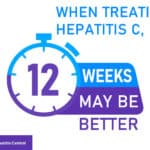Schering vs. Roche
What I find most significant about this report is that genotype 1 patients got somewhere between a 48% and 54% success rate. No wonder other drug companies are scrambling for an alternative treatment. It shouldn’t be too hard to beat a 50-50 chance.
I also wonder what the results would have been if both drug therapies had been given in a weight based dosing manner. Perhaps Roche would have been the big winner. This helps demonstrate why variables are so important to look at when reading about clinical studies.
Schering-Plough hepatitis drug beats Roche’s -study
Source: Reuters
(Adds Roche criticism of trial)
By Ransdell Pierson
NEW YORK, May 16 (Reuters) – Schering-Plough Corp.’s combination treatment for hepatitis C was more effective in eliminating the virus than Roche Holding AG’s better-selling similar combination, according to a small study described on Monday.
The study, which analyzed how patients treated for hepatitis C at the Cleveland Clinic fared between 2001 and 2004, was described at the annual Digestive Disease Week meeting being held in Chicago this week.
Clinic officials said a higher percentage of patients who received Schering-Plough’s therapy, especially those who were obese, eliminated the virus after treatment than those taking Roche’s therapy.
Complete data from the informal retrospective study was available on 28 obese patients and 58 non-obese patients, all of whom were Caucasian and had been infected with the hardest-to-treat genotype 1 strain of the virus. None of the patients had previously been treated.
Dr. Nizar Zein, a professor of medicine at the Cleveland Clinic, said he reviewed the patient records because no formal head-to-head trials of the two leading therapies has been completed.
Schering-Plough is conducting such a trial, but its results will not be known until 2007.
Schering-Plough’s combination consists of an injectable interferon called Peg-Intron that is given along with an antiviral pill called ribavirin for 48 weeks. Roche’s combo includes an interferon called Pegasys, which is also paired with ribavirin for the same duration.
But the dosage of Schering-Plough’s interferon is based on a patient’s body weight, whereas all patients receive the same standard dose of Roche’s interferon — regardless of whether thin or obese.
Zein said the virus was eliminated in 53 percent of obese patients getting the weight-based Schering-Plough interferon, similar to the 48 percent of non-obese patients receiving it.
By contrast, 18 percent of obese patients receiving the fixed-dose Roche interferon cleared the virus from their bloodstreams. That was lower by a statistically significant magnitude than the 28 percent of non-obese patients taking the same therapy who eliminated the virus.
“It was extremely surprising that patient responses were so much better with (Peg-Intron’s) weight-based dosing, especially in obese patients,” Zein told Reuters. He said he received no funding from Schering-Plough but has received past funding from Roche.
Roche questioned the validity of the study, saying its findings were “totally inconsistent” with large formal clinical trials of Pegasys in which far higher percentages of hepatitis C patients emerged free of the virus.
“This misleading research, which is based on a small number of patients outside the controlled setting of a clinical trial, is not valid from a scientific perspective and does a disservice to hepatitis C patients and their physicians,” said Juan Carlos Lopez-Talavera, Roche’s medical director.
But Cleveland Clinic’s Zein said drugs sometimes fare less well in “real-world” medical practice than in the carefully controlled settings of clinical trials.
An estimated 4 million Americans are believed to be infected with the hepatitis C virus. The damage it does to the liver, typically for 10 to 20 years before symptoms develop, is the biggest reason for undergoing liver transplants.







